Popular Answers
Safety
Most Khrushchev-era houses are equipped with gas water heaters. Careless handling and untimely repairs can lead to an explosion. There is a theory that in this case the wave will pass through the window and the damage will be minimal. But in fact, the partitions in panel houses are very thin and in the event of a powerful explosion, a small window under the ceiling will not affect the consequences of the shock wave.
Light Source
In the second half of the 20th century, people experienced much more everyday difficulties than they do now: due to a shortage of electricity, the lights were often turned off during the day. The window served as an additional source of lighting.
This is still relevant today: many owners of apartments with an internal window, running into the bathroom for a minute, do not reach for the switch and save energy – the light is enough for a short stay.
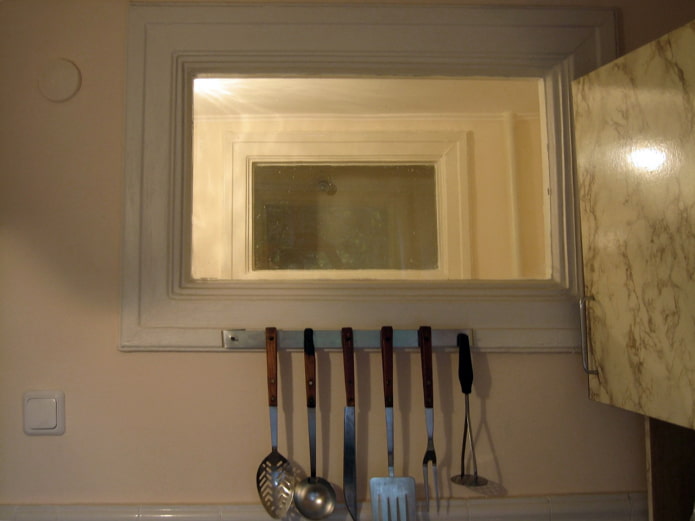
Opening up the space
Since Khrushchev-era buildings are not distinguished by spacious bathrooms, this window opening allows you to slightly “unload” the cramped box of the bathroom, which is especially important for people who feel uncomfortable in confined spaces. Some residents of Khrushchev-era buildings have found additional advantages of the interior window:
- “You can immediately see from the kitchen if there is someone in the bathroom.”
- “If you are taking a bath, you can look out into the kitchen and check the time on the clock.”
- “As a child, I really liked this window from the kitchen to the bathroom, there was a feeling that you were with everyone.”
Insolation
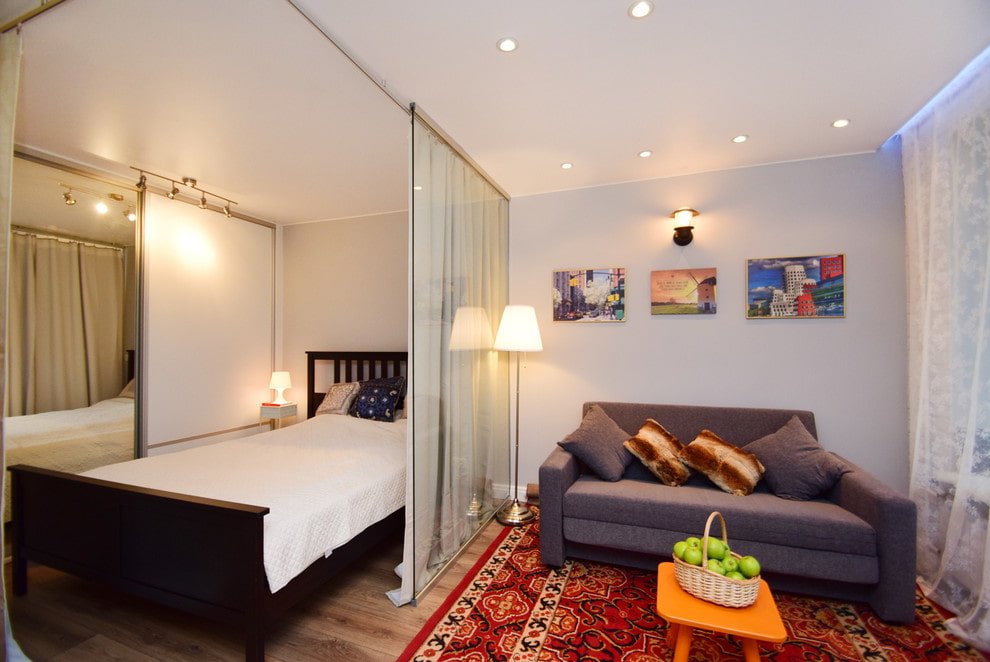
The only correct version of the presence of a window in a Khrushchev-era building is ensuring plumbing safety standards. And this is confirmed by the popular blogger and interior designer Ruslan Kirnichansky.
The five-story buildings were designed during the active fight against tuberculosis, so sunlight had to reach all rooms of the apartment.
According to the experts, this would help disinfect the damp room and kill Koch’s bacillus. But in terms of efficiency, the window located so high did not justify itself.
Medicine dealt with the spread of tuberculosis, and forced ventilation dealt with the humidity in the bathroom.
Is it worth leaving it today?
Opinions on the advisability of a window between the bathroom and the kitchen vary. Some people feel uncomfortable taking a bath and worry about violating privacy, while others consider it useful. And this is not without reason, because if you make the sash openable, you will be able to regulate the humidity level.
Another advantage of leaving the window is that it saves light, as I wrote earlier, although not significant, but it does exist. You can also make it a highlight of the interior and decorate it in an original way. But I will tell you about this below.
Some apartment dwellers leave a window on purpose so that in the event of an accident they can get to a person locked from the inside without breaking down the door.
How to seal a window?
If the window does not bother you, you can install a double-glazed window instead of the old frame and glass – the interior will be transformed for the better.
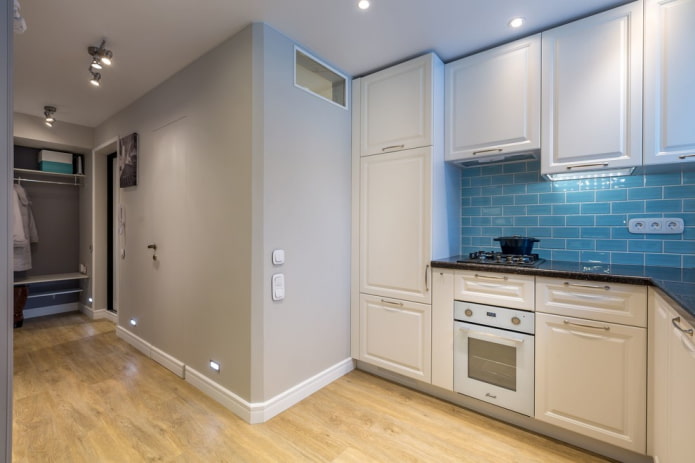
Another option is to replace a fixed window with a casement window: the sash will allow you to ventilate the bathroom without opening the door leading to a narrow corridor.
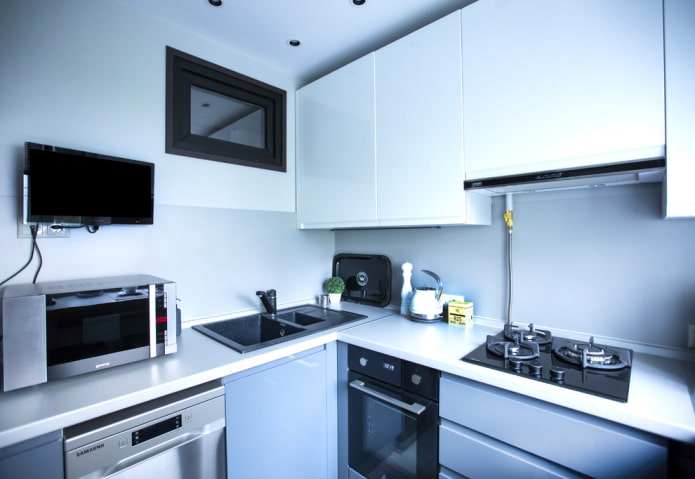
Sometimes apartment owners deliberately widen the window opening, creating an interesting decorative element that lightens the kitchen partition. But if the window seems unnecessary, there is a simple way to ensure your privacy – cover the glass with stained glass film (or insert a real stained glass window).

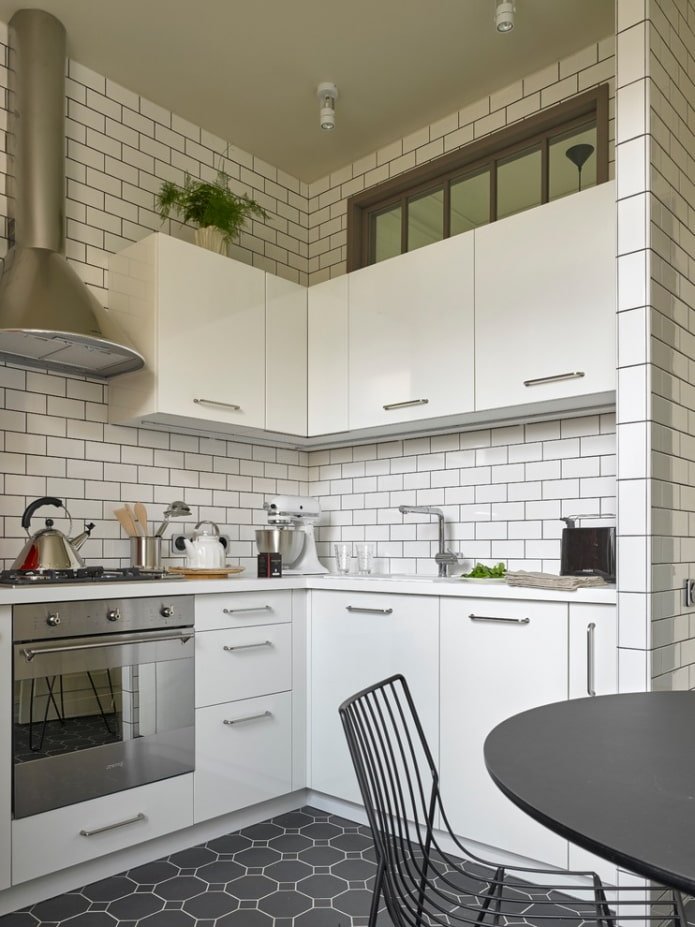
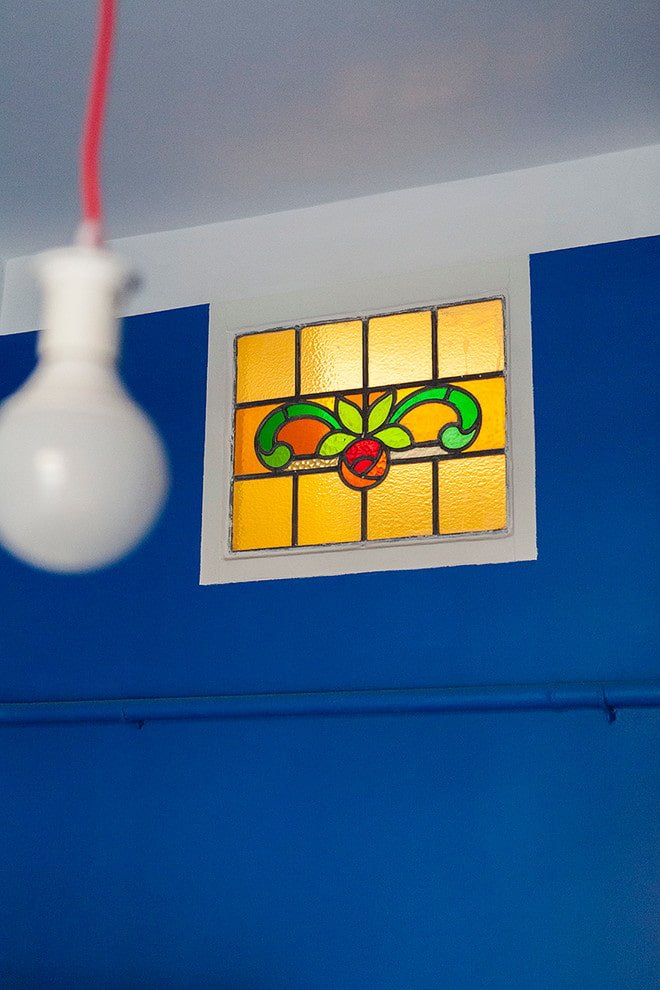
In order not to deprive the bathroom light, but to add a sense of privacy, the opening can be filled with glass blocks.
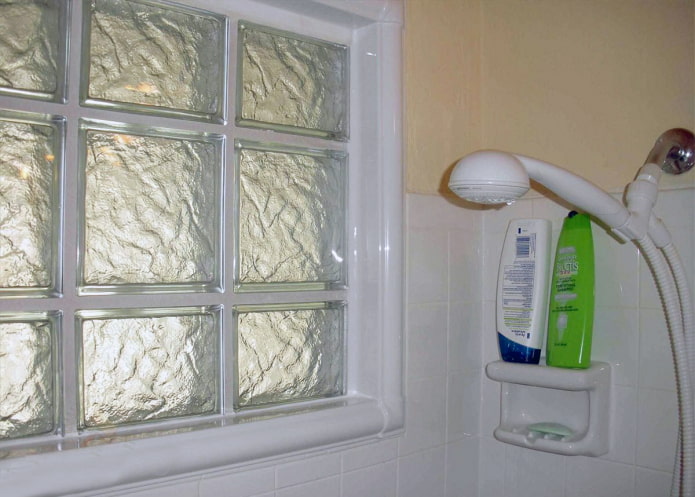
The window can also be turned into a niche with a shelf by dismantling the old frame and plastering the inner surface with starting putty. After alignment, the opening is tiled, mosaic, or a mirror is installed.
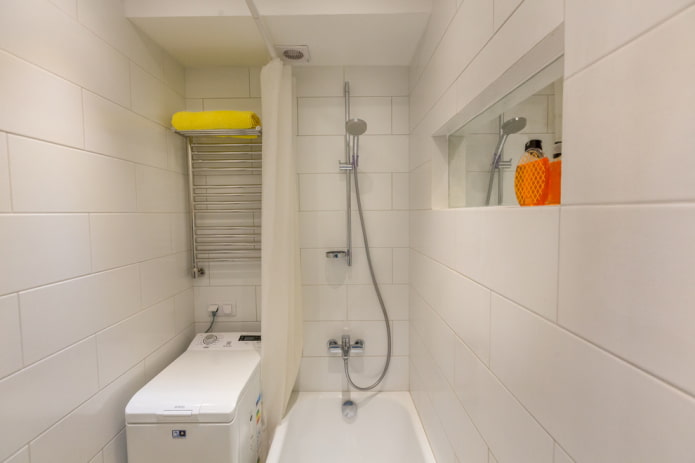
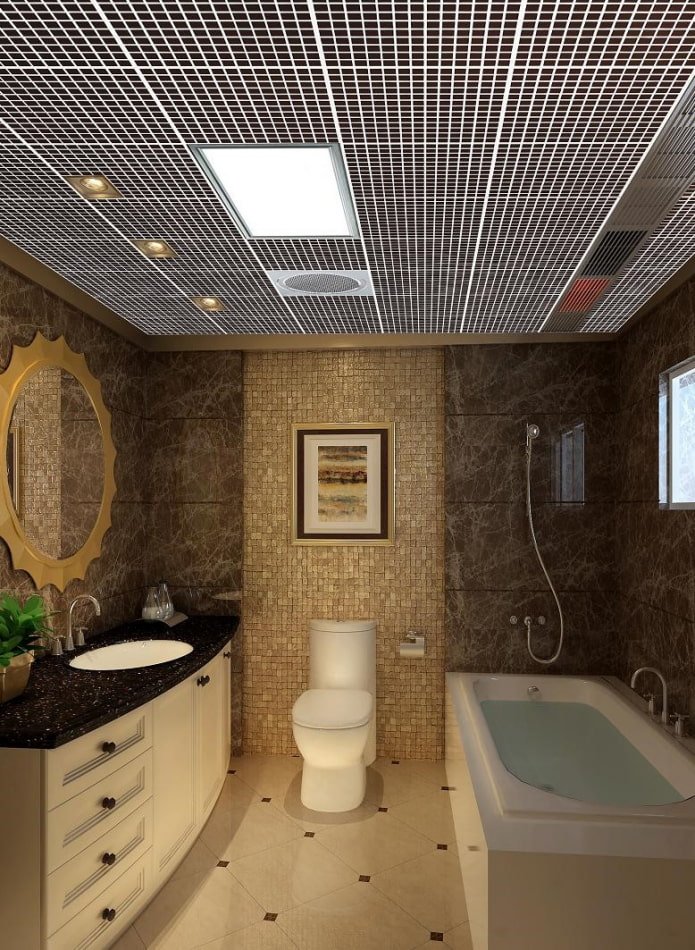

And to get rid of unnecessary element, it is necessary to install a lathing in the form of a chipboard shield and a plaster mesh, and then fill the opening with cement mortar.
Instead of chipboard, you can use a sheet of moisture-resistant plasterboard or plywood.
A more permanent, but also reliable option is to brick up the window: then you can attach something heavy to this section of the wall.
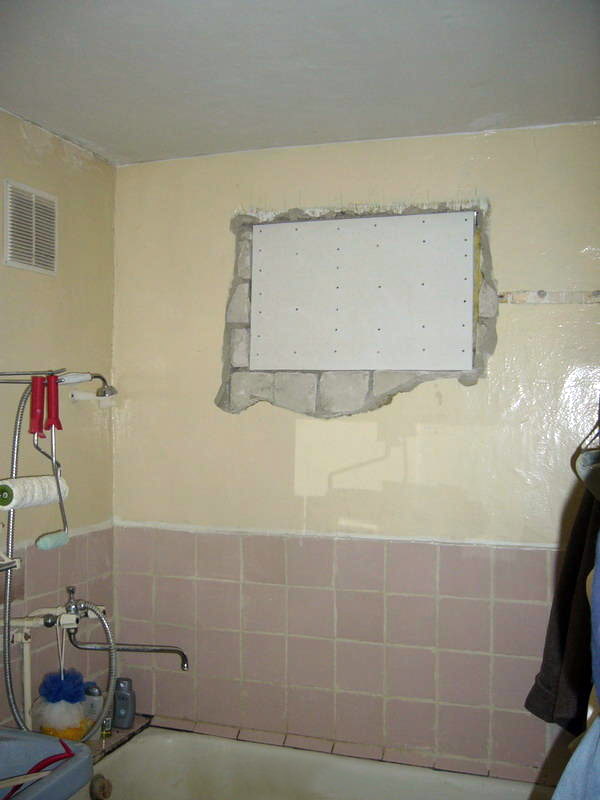
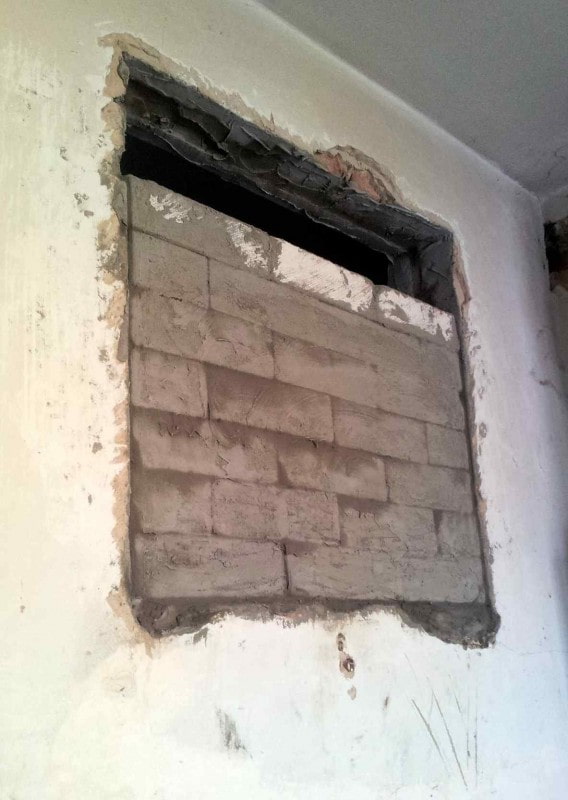
Despite the prevailing opinion about the absurdity of a window in the bathroom, at one time it served well and still brings benefits to the owners of Khrushchev-era buildings. Whether to leave the opening or to close it up is up to each individual to decide.
Now reading:
- Tips for washing curtains in a washing machine and by hand: useful recommendations.
- effective ways to find privacy in the country: how to protect yourself from neighbors?
- Country houses: projects, design ideas, decoration and arrangement of the dacha
- Corner kitchens: 74 examples in the interior and creative design solutions
- How to Decorate a Small Apartment – 10 Stylish Space-Saving Solutions